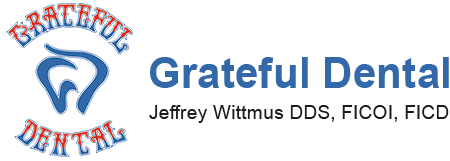We receive a lot of questions about toothpaste. There are a record number of different toothpastes on store shelves, each claiming varying dental benefits for teeth and gums. All of those ingredients that you cannot pronounce can be confusing. I have actively studied toothpastes since 1992. As an emergency room dentist on call back then, we were seeing generalized sensitivity in otherwise healthy dental patients. It turned out to be their toothpaste! Here is what you need to know.
1 – Fluoride is the most important ingredient in toothpaste. Sodium fluoride, monofluorophosphate, and stannous fluoride are FDA recognized as clinically effective in cavity prevention. Fluoride-free toothpaste does not provide any protection. Dozens of scientific studies have shown that the claims of fluoride in toothpaste and drinking water causing cancer are false. Drinking fluoridated tap water has also been proven to prevent cavities in teeth.
2 – The ADA seal on toothpaste ensures that the product has been tested in lab and clinical trials, proving the claims by the manufacturers about their products are true, safe, and effective.
3 – Natural toothpastes are not safer. One example is Redmond Earth paste which uses calcium bentonite clay, which contains heavy metals such as lead. Most natural toothpastes do not contain fluoride, providing little or no benefit.
4 – Sensitive toothpastes, such as Sensodyne, contain potassium nitrate and stannous fluoride. These chemicals can plug temperature sensing tubules in the dentin found under enamel or on root surfaces, reducing sensitivity. Typically, 7-10 days of use is needed to achieve clinical results. Stannous fluoride should be combined with zinc phosphate to stabilize this type of fluoride, preventing enamel staining.
5 – We do not recommend any toothpaste that says “tartar control” or “whitening” because these products contain pyrophosphates which irritate these temperature sensitive tubules in the tooth. These toothpastes can cause cold sensitivity! When the ADA council of therapeutics confronted the toothpaste manufacturers in the 1990’s, the response was clear. Discontinuing use of these products resolved the symptoms, but no warning label was required by the FDA. These companies prefer to sell you a sensitive toothpaste product to counteract the effects of their other toothpastes. Abrasive silicates are also found in these whitening toothpastes, which can cause abrasion to enamel, but more significantly on root surfaces at the gum line if you have recession.
6 – Lastly if you find a low abrasion, fluoride toothpaste labeled “natural,” be aware it may not contain sodium lauryl sulfate, which is a chemical that gives a foaming action. This is a very common chemical in toothpaste. Many patients report that the foaming action makes their mouths feel cleaner, and have trouble adjusting to toothpaste without “foam.”. If you can get used to the thinner viscosity of toothpaste without sodium lauryl sulfate, it is one more chemical you can do without.
7 – If whiter teeth are desired, toothpastes are much less effective than whitening procedures in the dental office. The best value is an at-home whitening system. For red wine stains, whitening pens and over-the-counter white strips are great. For other staining, such as tobacco or coffee, these may need constant use, which is not great value. I recommend Opalescence syringes with custom trays, the GLO home whitening system, or my favorite, Opalescence Go! Trays. Each takes 30 minutes with noticeable results in a couple sessions. Our website video on how it works is a popular view. Check it out or give us a call!
Dr. Wittmus’ favorite toothpaste is Periosciences Natural AO Pro Toothpaste. You can find this toothpaste here: https://qr.periosciences.com/cmanSA


